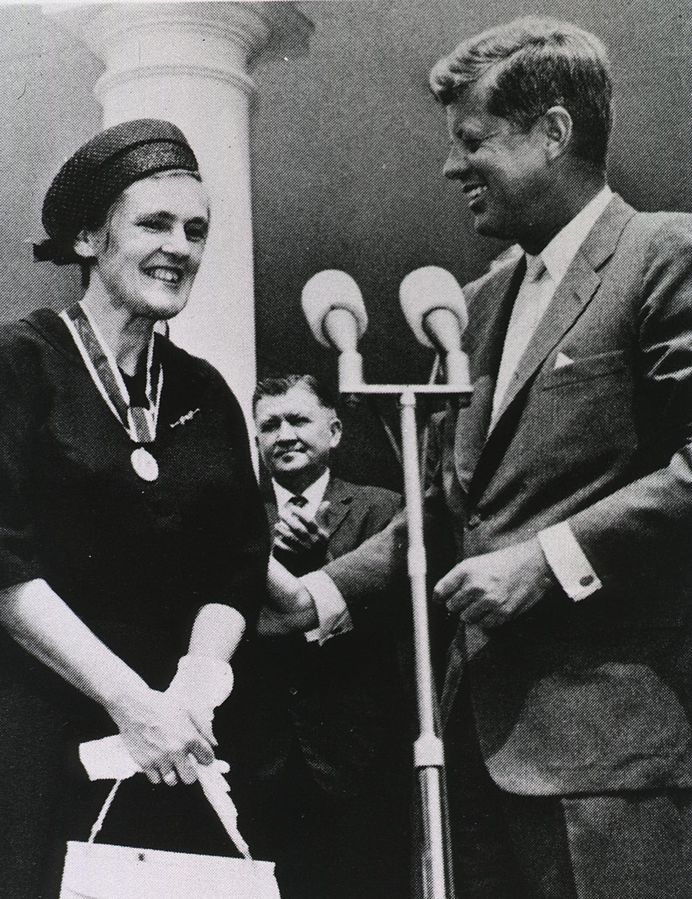Browse "Science & Technology"
-
Article
Synchrotron
A synchrotron is a source of brilliant light that acts like a giant microscope to allow matter to be seen at the atomic level. Synchrotron light is millions of times brighter than sunlight and millions of times more intense than conventional X-rays.
"https://development.thecanadianencyclopedia.ca/images/tce_placeholder.jpg?v=e9dca980c9bdb3aa11e832e7ea94f5d9" // resources/views/front/categories/view.blade.php
https://development.thecanadianencyclopedia.ca/images/tce_placeholder.jpg?v=e9dca980c9bdb3aa11e832e7ea94f5d9
-
Article
Taber Child
In 1961, fragments of a human infant skull from were recovered from the banks of the Oldman River near Taber, Alberta.
"https://development.thecanadianencyclopedia.ca/images/tce_placeholder.jpg?v=e9dca980c9bdb3aa11e832e7ea94f5d9" // resources/views/front/categories/view.blade.php
https://development.thecanadianencyclopedia.ca/images/tce_placeholder.jpg?v=e9dca980c9bdb3aa11e832e7ea94f5d9
-
Article
Talc
Talc is a mineral composed of 31.7% magnesium oxide (MgO), 63.5% silicon dioxide (SiO2) and 4.8% water. It is formed by the alteration of dolomite or ultramafic IGNEOUS rocks. A formula for pure talc would look like this: 3 dolomite + 4 quartz + 1 water = 1 talc + 3 calcite + 3 CO2.
"https://development.thecanadianencyclopedia.ca/images/tce_placeholder.jpg?v=e9dca980c9bdb3aa11e832e7ea94f5d9" // resources/views/front/categories/view.blade.php
https://development.thecanadianencyclopedia.ca/images/tce_placeholder.jpg?v=e9dca980c9bdb3aa11e832e7ea94f5d9
-
Article
Tantalum
Tantalum (Ta) is a grey, heavy, very hard metal with a high melting point. Tantalum is a chemical element with the chemical symbol Ta and atomic number 73. The name of this metal is derived from King Tantalus, a figure in Greek mythology. Due to its properties tantalum is used in the electronics industry.
"https://d2ttikhf7xbzbs.cloudfront.net/minerals/tantalum.jpg" // resources/views/front/categories/view.blade.php
https://d2ttikhf7xbzbs.cloudfront.net/minerals/tantalum.jpg
-
Article
Technical Education
From its origins in manual training "shop" and industrial arts, technical education has consisted of practical and applied subject matter that reflects the practices of current society.
"https://development.thecanadianencyclopedia.ca/images/tce_placeholder.jpg?v=e9dca980c9bdb3aa11e832e7ea94f5d9" // resources/views/front/categories/view.blade.php
https://development.thecanadianencyclopedia.ca/images/tce_placeholder.jpg?v=e9dca980c9bdb3aa11e832e7ea94f5d9
-
Macleans
Technical Marvels May Revolutionize Health Care
They're everywhere. Turn on the TV, pick up a newspaper or magazine, and the stories leap out: stem cells to heal the body's failing nervous system; transplanted wombs; the smaller-than-small world of nanotechnology; and yes, as in the previous story, the feverish quest for an artificial heart.This article was originally published in Maclean's Magazine on March 25, 2002
"https://development.thecanadianencyclopedia.ca/images/tce_placeholder.jpg?v=e9dca980c9bdb3aa11e832e7ea94f5d9" // resources/views/front/categories/view.blade.php
https://development.thecanadianencyclopedia.ca/images/tce_placeholder.jpg?v=e9dca980c9bdb3aa11e832e7ea94f5d9
-
Article
Technology in Canada
Technology is the manipulation of the physical world to achieve human goals.
"https://d2ttikhf7xbzbs.cloudfront.net/media/media/d42168e9-b088-44c8-8e61-25af2ac1ff3c.jpg" // resources/views/front/categories/view.blade.php
https://d2ttikhf7xbzbs.cloudfront.net/media/media/d42168e9-b088-44c8-8e61-25af2ac1ff3c.jpg
-
Article
Telecommunications
Telecommunications is defined as the electronic communication of information over distance. In theory, this definition covers all forms of electronic communication and does not distinguish between different kinds of information: voice, data, text and video.
"https://development.thecanadianencyclopedia.ca/images/tce_placeholder.jpg?v=e9dca980c9bdb3aa11e832e7ea94f5d9" // resources/views/front/categories/view.blade.php
https://development.thecanadianencyclopedia.ca/images/tce_placeholder.jpg?v=e9dca980c9bdb3aa11e832e7ea94f5d9
-
Article
Telegraph
In 1868 the Montreal Telegraph Co began facing direct competition from the newly established Dominion Telegraph Co and price wars broke out.
"https://d2ttikhf7xbzbs.cloudfront.net/media/media/3529c1a0-90c8-4e24-b04d-a02c760268b8.jpg" // resources/views/front/categories/view.blade.php
https://d2ttikhf7xbzbs.cloudfront.net/media/media/3529c1a0-90c8-4e24-b04d-a02c760268b8.jpg
-
Article
Telephones
The invention of the TELEGRAPH (1837) by Samuel Morse and the telephone (1876) by Alexander Graham BELL were milestones in the quest to communicate over great distances with reliability, accuracy and speed.
"https://development.thecanadianencyclopedia.ca/images/tce_placeholder.jpg?v=e9dca980c9bdb3aa11e832e7ea94f5d9" // resources/views/front/categories/view.blade.php
https://development.thecanadianencyclopedia.ca/images/tce_placeholder.jpg?v=e9dca980c9bdb3aa11e832e7ea94f5d9
-
Article
Television
Overlaying these two perspectives is the reality that Canadians have long been among the world's most avid television viewers with tastes that do not necessarily discriminate between domestic and foreign content, or between entertainment and education.
"https://d2ttikhf7xbzbs.cloudfront.net/media/media/19954988-d8b9-48c4-b611-8619640190be.jpg" // resources/views/front/categories/view.blade.php
https://d2ttikhf7xbzbs.cloudfront.net/media/media/19954988-d8b9-48c4-b611-8619640190be.jpg
-
Article
Telidon
Telidon, a combination of the Greek words meaning "to know at a distance," was a waypoint en route to the Internet and was an early demonstration of how technology can provide on-demand access to information.
"https://development.thecanadianencyclopedia.ca/images/tce_placeholder.jpg?v=e9dca980c9bdb3aa11e832e7ea94f5d9" // resources/views/front/categories/view.blade.php
https://development.thecanadianencyclopedia.ca/images/tce_placeholder.jpg?v=e9dca980c9bdb3aa11e832e7ea94f5d9
-
Article
Thalidomide in Canada
The drug thalidomide was developed in Germany in the 1950s and was first available in Canada in 1959. It was originally prescribed as a sedative but was also given to pregnant women for nausea relief. By the end of 1962, however, thalidomide had been withdrawn from markets worldwide, following reports of babies born with severe birth defects. The tragic consequences led to changes in drug licensing and regulation in Canada and other countries, including the US and UK. More than 10,000 children around the world were born with deformities caused by thalidomide; many died within months of birth. In Canada, more than 100 children were born with congenital malformations caused by thalidomide. In the 21st century, thalidomide was approved by Health Canada for the treatment of leprosy, multiple myeloma, and some autoimmune diseases.
"https://d2ttikhf7xbzbs.cloudfront.net/media/new_article_images/FrancesOldhamKelsey/Frances_Oldham_Kelsey_and_John_F._Kennedy.jpg" // resources/views/front/categories/view.blade.php
https://d2ttikhf7xbzbs.cloudfront.net/media/new_article_images/FrancesOldhamKelsey/Frances_Oldham_Kelsey_and_John_F._Kennedy.jpg
-
Article
Canadian Science and Engineering Hall of Fame
The Canadian Science and Engineering Hall of Fame was a permanent exhibition at the Canada Science and Technology Museum. Founded in 1991, the Hall of Fame honoured individuals whose scientific or technological achievements have had long-term implications for Canadians. Canadian scientists and innovators inducted in the Hall of Fame, include Maude Abbott, Wilder Penfield, Sir Sandford Fleming, Hugh Le Caine and Elsie MacGill. The Hall of Fame was retired in 2017.
"https://development.thecanadianencyclopedia.ca/images/tce_placeholder.jpg?v=e9dca980c9bdb3aa11e832e7ea94f5d9" // resources/views/front/categories/view.blade.php
https://development.thecanadianencyclopedia.ca/images/tce_placeholder.jpg?v=e9dca980c9bdb3aa11e832e7ea94f5d9
-
Article
The Craft of Motion Picture Making
Perhaps more than any other art form, filmmaking is a collaborative art. Although in our celebrity-obsessed culture the actors or "stars" get the lion's share of attention, by the time any film reaches the screen, hundreds of craftspeople have had a hand in getting it there.
"https://development.thecanadianencyclopedia.ca/images/tce_placeholder.jpg?v=e9dca980c9bdb3aa11e832e7ea94f5d9" // resources/views/front/categories/view.blade.php
https://development.thecanadianencyclopedia.ca/images/tce_placeholder.jpg?v=e9dca980c9bdb3aa11e832e7ea94f5d9
